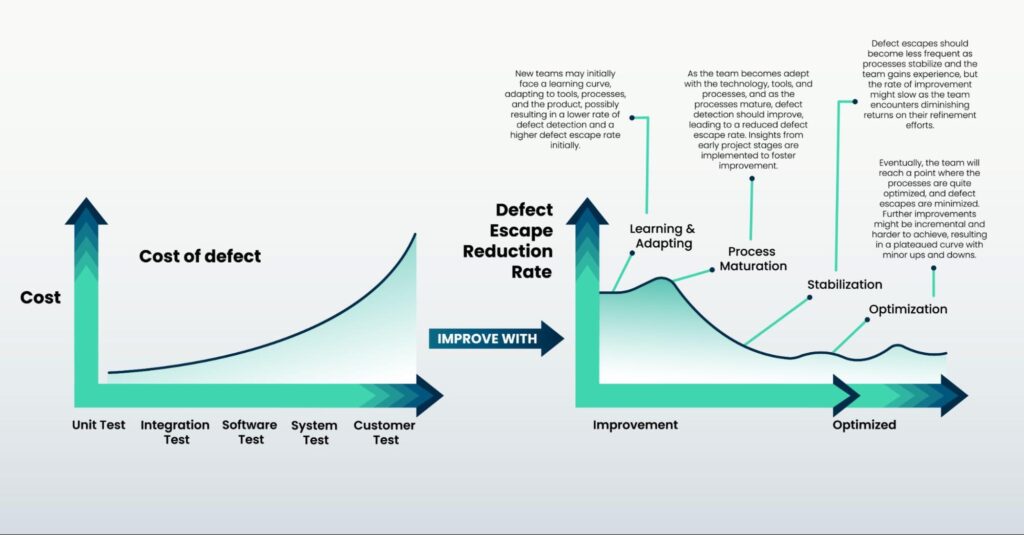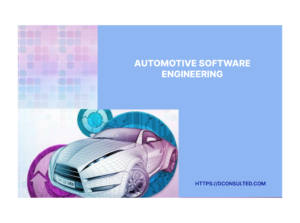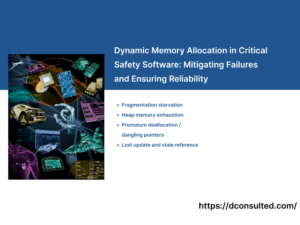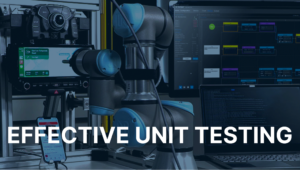
Empowering Your People Isn’t Enough | DConsulted
Learn why empowering employees alone doesn’t guarantee success. Discover how strategic alignment and leadership support drive real results.

With ASPICE (Automotive SPICE) and ISO 26262 compliance at the forefront, car manufacturers, automotive software service companies, and autonomous driving pioneers are investing heavily in software system testing to ensure their products meet stringent standards. A pivotal metric guiding this is the Defect Escape Rate.
This article will delve into the basics of the Defect Escape Rate, its significance, and its evolution into the Defect Escape Reduction Rate.
Defect Escape Rate, in software testing, is a critical metric that assesses the efficiency of a testing process in detecting and addressing defects throughout the development lifecycle. It measures the proportion of defects that escape detection in one phase of the development process, highlighting the importance of comprehensive testing methodologies at various stages.
Unit testing, integration testing, software requirement testing, and system qualification testing are integral components of this approach. Unit testing evaluates individual components, integration testing verifies interactions between modules, software requirement testing aligns the software with specified requirements, and system qualification testing assesses the overall system’s compliance with predefined specifications.
These testing phases collectively contribute to minimizing the Defect Escape Rate, emphasizing the significance of early detection and resolution throughout the development lifecycle. The ability to catch and address defects at each stage not only reduces the associated costs but also enhances the reliability and safety, particularly in critical domains such as automotive software.
The cost of defects, especially in the automotive sector, is not merely a financial concern; it extends to reputation and sometimes involves human safety.
When defects slip through the early stages of development and testing and get detected later, the effort and cost required to rectify them amplify considerably. The stakes are exceptionally high in the automotive industry, in which even minor defects can have catastrophic consequences. A simple software glitch can result in accidents, injuries, or even fatalities. Therefore, early detection and rectification of defects cannot be overemphasized.

The Defect Escape Rate is typically calculated using the following formula:
Defect Escape Rate = (Total Defects Identified in Phase N-1 / Defects Identified in Phase N that should have been caught in Phase N-1) × 100
This formula quantifies the extent to which defects escape the earlier phases of development and testing, highlighting the inadequacies in the testing process. The higher the Defect Escape Rate, the more defects slip through the cracks.
Recognizing the gravity of high Defect Escape Rates, the automotive industry, like other sectors, has evolved its approach to quality assurance. Beyond merely identifying and measuring defects that escape, there’s a growing focus on reducing the occurrence of these escapes. This shift in perspective has led to the emergence of the Defect Escape Reduction Rate (DERR).
DERR quantifies the rate at which the incidence of defect escapes declines over a specified period. It reflects improvements in the testing process and code quality. Measuring DERR provides a penetrating look into the efficacy and enhancement of quality assurance measures and the development process. The formula for computing DERR is shown below:
DERR = (Change in Defect Escape Rate (DER) between two distinct points in time or project phases)
In simpler terms, DERR is like the “acceleration” in software quality metrics. Just as acceleration measures the rate of change in speed over time, DERR measures the rate of change in defect escape reduction over time.
A new team embarking on a novel development process often experiences a learning curve. They adapt to new tools, techniques, and the product itself. This adaptation phase may initially result in a relatively flat or even rising DERR. As the team becomes adept with the technology, tools, and processes, defect detection improves as the processes mature, leading to a reduced defect escape rate. Insights from early project stages are implemented to foster improvement.
The curve begins to slope downward, indicating improvements in the defect escape rate. However, it’s important to note that this improvement might slow down as the team encounters diminishing returns on their refinement efforts. Eventually, the team reaches a point at which processes are optimized, and defect escapes are minimized. Further improvements become incremental and more challenging, resulting in a plateaued curve with minor ups and downs.
The feedback loop, at the heart of DERR measurement and improvement, is crucial in the journey to reduce defect escapes. It’s the mechanism through which lessons learned from defect escapes are incorporated into the testing process to prevent similar issues in the future.
Listed below are feedback loops that can be implemented for DERR improvement:
Root Cause Analysis
Root cause analysis is understanding why a defect occurred in the first place. It goes beyond surface-level fixes and seeks to identify systemic issues contributing to defects. In the automotive software industry, root cause analysis can distinguish between a safe, dependable system and one riddled with vulnerabilities. Here are some critical steps to practical root cause analysis:
Test automation uses automated scripts and tools to test software applications. It can be a game-changer in automotive software, especially regarding ensuring quality and reliability.
Here’s why test automation is crucial in the realm of ASPICE ISO 26262 software system testing:
A critical component of CI/CD pipelines, where software changes are automatically built, tested, and deployed. This ensures that defects are caught early and that software releases are reliable.
A tight feedback loop between developers and testers is essential in the quest for quality and reliability. It ensures that defects are addressed promptly, reducing the chances of similar issues in subsequent releases. In the context of ASPICE ISO 26262 software system testing, this feedback loop is the bridge that connects the identification of defects to their resolution.
The key elements of a robust feedback loop in the automotive software industry include:
Periodic training sessions can be instrumental in ensuring the team is updated with the latest testing methodologies and tools. When teams understand the importance of their role and are equipped with the right tools, the number of defects can decrease.
Encourage teams to share knowledge about recurring defects and their solutions. This can be done through documentation, tech talks, or informal discussions. Sharing knowledge helps prevent the recurrence of similar issues and contributes to DERR improvement.
The complexity of modern automotive software systems should not deter us from striving for excellence. While the automotive industry faces unique challenges, particularly regarding safety-critical applications, effective metrics, and continuous improvement processes can help navigate this complexity and reduce defect escapes.
Defects in critical safety software, such as that used in autonomous driving systems, can have direct business implications. A high defect escape rate could mean potential recalls, system downtimes, or life-threatening situations. From a financial standpoint, defects caught later in the development cycle or post-production are notoriously more expensive. DERR helps in quantifying and mitigating these business risks.
In the context of automotive software development, relying on empirical evidence rather than anecdotal arguments is crucial. Numerous studies have shown that when properly managed and paired with effective methodologies, metrics like the Defect Escape Rate and its reduction can significantly improve software quality and reliability. This evidence-based approach is a cornerstone of quality assurance in the automotive sector.
In automotive software development, the journey to reduce defect escapes is an ongoing endeavor. The Defect Escape Rate and its evolution into the Defect Escape Reduction Rate serve as critical metrics that guide this journey. The feedback loop plays a pivotal role in this quest for excellence. It ensures that lessons learned from defect escapes are not lost but are incorporated into the testing process to prevent similar issues in the future.
Other Articles

Learn why empowering employees alone doesn’t guarantee success. Discover how strategic alignment and leadership support drive real results.

Generative AI tools like ChatGPT are revolutionizing software engineering by converting UML diagrams into accurate, structured code. Learn more about it here.

AI-powered requirement review tools simplify engineering verification, ensuring accuracy, efficiency, and compliance with INCOSE guidelines. Learn more about it here.

Managing and optimizing thread overhead is important for safety-critical and embedded systems. Learn more about the C++ multithread common myths here.

Managing and optimizing thread overhead is important for safety-critical and embedded systems. Learn more about the C++ multithread common myths here.

Discover the critical role of effective interface management in complex systems. Learn how centralized tools, AI-powered solutions, and well-defined processes can prevent errors, enhance collaboration, and ensure safety in industries like automotive and aerospace.

The system requirements analysis process under ASPICE and ISO26262 frameworks shapes automotive system architecture design for enhanced safety, reliability, and compliance. Learn more about it here.

Compliance with ASPICE and ISO26262 standards provides a significant impact on automotive software development. Learn more about it here.

AI technologies like ChatGPT-4 are revolutionizing requirements engineering by improving accuracy, consistency, and efficiency. Learn about the role of AI in refining, validating, and managing project requirements here.

Model-Based Systems Engineering (MBSE) offers a robust framework to streamline the entire engineering process, from design to validation. Learn more about it here.

Data-Oriented Design (DOD) can revolutionize automotive software development by enhancing performance, reducing costs, and minimizing hardware requirements. Learn more about it here.

Explore the evolution of functional safety, its growing importance in industries like automotive, and the critical role of Fault Tolerant Time Interval (FTTI) in ensuring system reliability. Learn how FTTI, along with Malfunctioning Behavior Manifestation Time (MBMT) and Hazard Manifestation Time (HMT), contributes to robust safety designs, preventing hazards in safety-related systems such as ADAS and autonomous vehicles. Discover the impact of ISO 26262 standards on the development of effective fault detection and reaction mechanisms in automotive safety.

While ISO 26262 primarily addresses functional safety, SOTIF extends the scope to focus on potential hazards arising from system behaviour, even when the system functions as intended. Learn more about it here.

Discover the risks of reinterpret_cast in safety-critical software and explore safe alternatives like polymorphism and templates for robust, efficient code.

In a rapidly evolving technological landscape, the demand for systems that can not only withstand errors but also adapt to them is paramount. This article delves into the world of Fault-Tolerant (FT) systems, emphasizing their significance in maintaining the functionality and safety of critical operations across various sectors. It explores the latest advancements in FT technology, underscoring the importance of resilience and adaptability in ensuring uninterrupted service and safeguarding against potential failures.

In a rapidly evolving technological landscape, the demand for systems that can not only withstand errors but also adapt to them is paramount. This article delves into the world of Fault-Tolerant (FT) systems, emphasizing their significance in maintaining the functionality and safety of critical operations across various sectors. It explores the latest advancements in FT technology, underscoring the importance of resilience and adaptability in ensuring uninterrupted service and safeguarding against potential failures.

Discover the transformative impact of Software-Defined Networking (SDN) and Multicast Addressing on automotive embedded systems. Explore how these technologies enhance communication efficiency, safety, and performance in the automotive industry, leading to cost-effective, scalable, and eco-friendly solutions. Dive into the technical advantages and practical applications for modern vehicles and infrastructure.

Discover how ChatGPT revolutionizes engineering with AI, accelerating learning, enhancing safety, and boosting productivity.

ASPICE and ISO26262 frameworks improve system development in the automotive industry, ensuring safety, compliance, and high-quality standards.

Conducting software FMEA, FTA, and compliance with ISO 26262 helps developers create software that meets stringent safety requirements. Learn more about it here.

Explore the challenges of dynamic memory allocation in critical software, learn how to mitigate failures, and ensure the reliability of safety-critical systems. Real-life failures and practical solutions are discussed.

Strong types are a key concept in C++ programming for functional safety. Learn how strong types can reduce errors in critical systems with C++.

Unit testing is an essential part of the software development process. Learn more about it here.

Learn about categorizing requirements, including functional, non-functional, performance, interface etc for effective system management and development.
